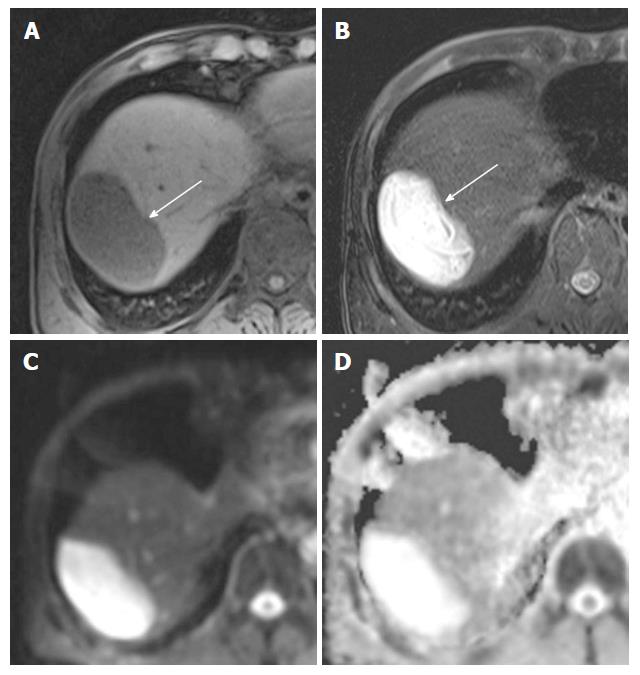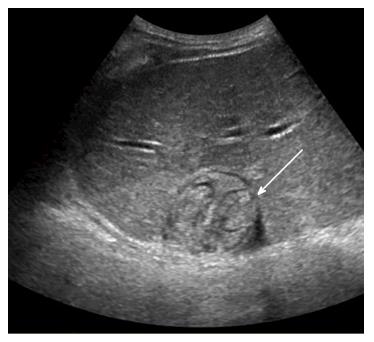Copyright
©The Author(s) 2016.
World J Radiol. Oct 28, 2016; 8(10): 846-850
Published online Oct 28, 2016. doi: 10.4329/wjr.v8.i10.846
Published online Oct 28, 2016. doi: 10.4329/wjr.v8.i10.846
Figure 1 Liver computed tomography imaging.
A: Axial noncontrast computed tomography (CT) image showing an ovoid low attenuation lesion (arrow) in the right hepatic dome. This mass has internal linear or curvilinear cord-like lesions that are most likely calcified. This mass (arrow) measured 6.3 cm × 3.5 cm. B: Axial contrast-enhanced CT image clearly showing that this ovoid lesion (arrow) does not have any enhanced portions, which suggests a totally necrotic lesion or a cystic mass. The internal cord-like structures are bizarrely arranged; C: Coronal contrast-enhanced CT image showing that the internal structures within the mass (arrow) are arranged in a whirling manner; D: Low attenuation (-22 Hounsfield units) region (arrow) in the center of the mass on a contrast-enhanced CT image, suggesting the presence of a small amount of fat.
Figure 2 Liver magnetic resonance imaging.
A: Axial nonenhanced T1-weighted image showing that this hepatic mass (arrow) exhibits homogeneously low signal intensity; B: Fat-saturated axial T2-weighted image showing that the mass (arrow) exhibits very high signal intensity and internal serpiginous tubular structures; C and D: Axial diffusion-weighted image (C) and apparent diffusion coefficient map (D) showing that the diffusion in the mass is not restricted.
Figure 3 Liver ultrasonography showing a well-defined mixed echoic mass (arrow) in the dome of the liver.
Multiple cord-like structures can be seen within the mass.
- Citation: Jo GD, Lee JY, Hong ST, Kim JH, Han JK. Presumptive case of sparganosis manifesting as a hepatic mass: A case report and literature review. World J Radiol 2016; 8(10): 846-850
- URL: https://www.wjgnet.com/1949-8470/full/v8/i10/846.htm
- DOI: https://dx.doi.org/10.4329/wjr.v8.i10.846











